Perfect Pairing: Pear and Brie Baked in Pastry
One of the things our family often enjoys after dinner is fruit. My mother’s rule of thumb is to always have some sort of fresh fruit available as a healthy after-dinner treat.
Seldom, though, does that include pears, with the exception of Asian pears.
It’s one of those fruits that I sometimes think of as the odd cousin in the fruit bowl of life.
When I’m at the grocery store, I’m amazed that an entire aisle is devoted to apples. They’re shiny. They’re crisp. They come in vivid red, golden yellow, or lime green. They’re so popular, there’s even a martini made with their essense.
And where do we find the pears? Tucked over there behind the bananas and oranges, usually. Hardly befitting this venerable fruit that’s an integral part of the Oregon landscape.
Hailed as a “gift of the gods” by the Greek poet Homer in the “Odyssey,” the venerable pear has graced diverse civilizations for more than four thousand years.
According to the Pear Bureau, the U.S. is the third-largest pear-growing country in the world, and 84 percent of the nation’s pears are grown in Oregon and Washington. Oregon has two major pear-growing regions: The Columbia River and Southern Oregon. In the Columbia River region, the rich volcanic soil nurtures pear orchards from White Salmon, Washington to Hood River, Oregon, where thousands of pear trees thrive under the watchful gaze of snow-capped Mount Hood. In Southern Oregon, home of famous fruit purveyor Harry & David, the Rogue River Valley is dotted with pear orchards.
I’ve often wondered why the pears I find at the supermarket are so firm. I mean, how do you tell when one is ripe? I found the answer at the Pear Bureau. Pears are one of the few fruits that are not picked ripe from the tree. They’re mature, but they’re best stored, transported and sold for ripening at home. According to the Pear Bureau: Bartlett pears change from green to yellow as they ripen. Non-Bartlett pears (Anjou, Bosc, Comice, Concorde, Seckel and Forelle) do not dramatically change color as they ripen. Because pears ripen from the inside out, the best way to determine ripeness is to “check the neck.” To do this, gently press near the stem with your thumb. When it gives to gentle pressure it is ripe, juicy, and ready to eat. If you wait until the pear is soft around the middle, it will be overripe.
To ripen pears, leave them out in the kitchen in a bowl at room temperature. If you want to speed up the ripening process, put them in a brown paper bag with a banana and close up the bag.
Since moving to Oregon, I’ve come to appreciate sliced pears to accompany a variety of cheeses as an appetizer or a light brunch or lunch with a glass of semi-dry Oregon riesling like the fantastic one from Bergstrom, or one of Oregon’s many outstanding pinot gris. As we made plans to attend the Pear, Wine and Cheese Jubliee at Willamette Valley Vineyards this weekend, the idea hit me to make a nice snack before attending the event from our favorite cheese from Willamette Valley Cheese Company with some pears baked in phyllo dough or pastry. Charles found a round of Willamette Valley Cheese Co.’s French Prairie Brie at one of our local wine shops, Santiam Wine Co., and while at the grocery store I decided to use Pillsbury Crescent dough for the pastry shell.
The dish turned out to be easy to make, quick, delicious and quite pretty…almost too pretty to eat…but then you should never go wine tasting on an empty stomach.
Pear and Brie Baked in Pastry
- 1 tube of Pillsbury Crescent dough (found in the refrigerated dairy/pasta sections of most grocery stores)
- 1 Anjou or Bartlett pear
- 1 small round of brie
- Preheat the oven to 350 degrees F.
- Unwrap the round of brie, turn it on its side and slice it into two discs.
- Wash, peel and slice the pear into discs roughly the same width as the brie and remove the core.
- Place a disc of pear between the two discs of cheese. Think of it as a cheese and pear sandwich.
- Pop open the tube of dough and unroll the crescent pieces on a butcher block. Cut the dough into triangles along the pre-made perforations .
- Working your way around the brie in layers, completely wrap the cheese and pear sandwich with the dough triangles, overlapping the dough to make sure the brie is totally encased. (See photo above)
- Place a Silpat baking sheet on a cookie pan or oil the pan and place the dough-encased brie on the pan. Bake for 15-20 minutes until the dough is a nice golden brown.
Enjoy with a glass of wine!
— Vic
Category: Appetizers, Cheese
About the Author (Author Profile)
Victor Panichkul is a journalist and writer by training; a cook, wine lover and photographer by passion; and a lover of the outdoors since moving to Oregon more than 10 years ago. He is a native of Bangkok, Thailand.






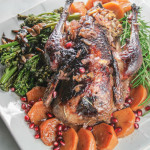
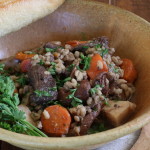
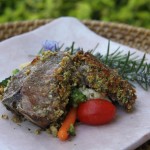

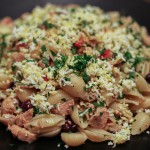

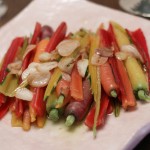
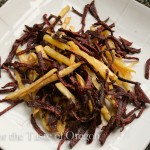

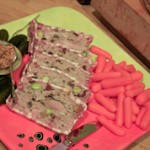
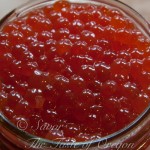
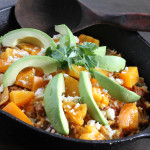
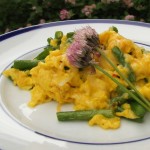
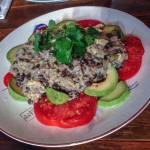
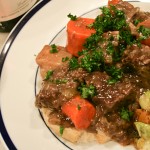
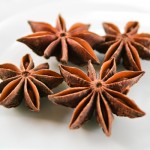
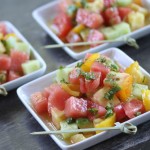

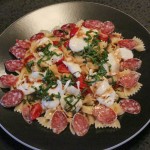
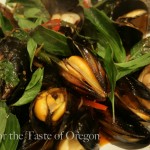


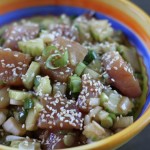
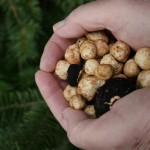
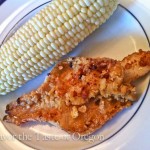

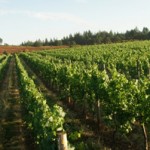
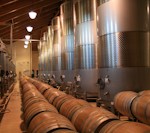
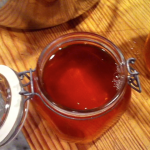





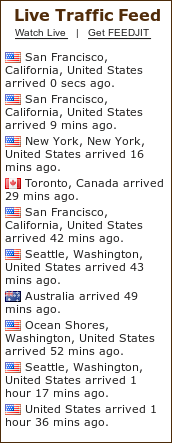




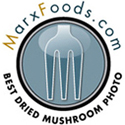
The Brie and Pear Pastry looks incredible! I hope you were able to make it up to the winery this weekend. Perfect weather to be sipping on some Riesling or my favorite, the Dry Riesling, while enjoying cheese and pears.
Both Charles and I were there. We left a business card with the person at the entry table to pass along that we made it. It was a great event and such beautiful weather. Charles will be working on a blog featuring Willamette Valley Vineyards in the near future and we’ll be using photos that we took during the event.
Always glad to run into a fellow Oregonian blog, I love it here and pears and brie…one of my faves.
Cathy, Thanks for reading and commenting. Luv your blog!
Thanks for sharing this gorgeous recipe! Thanks, too, for helping to spread the word about proper pear ripening. Too often, we eat pears that are underripe and have not had the opportunity to reach their peak flavor. With a little patience and know-how, everyone has the opportunity to enjoy a pear at its ripe, sweet and juicy best! On behalf of the 327 pear growers in Oregon, thanks for helping your readers become pear pros!
We’ve put a link from our blog home page to your Web site. I found it very informative. It was nice running into your representatives at the Wine, Pear and Cheese Jubilee at WVV!